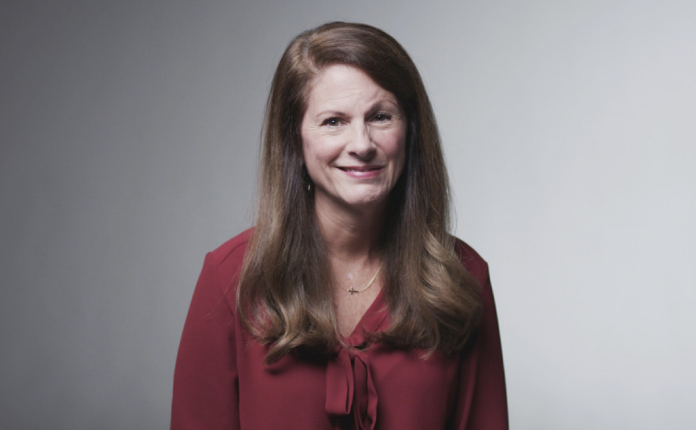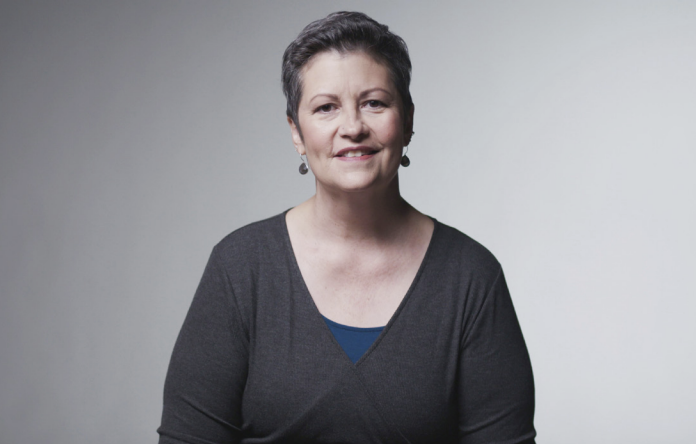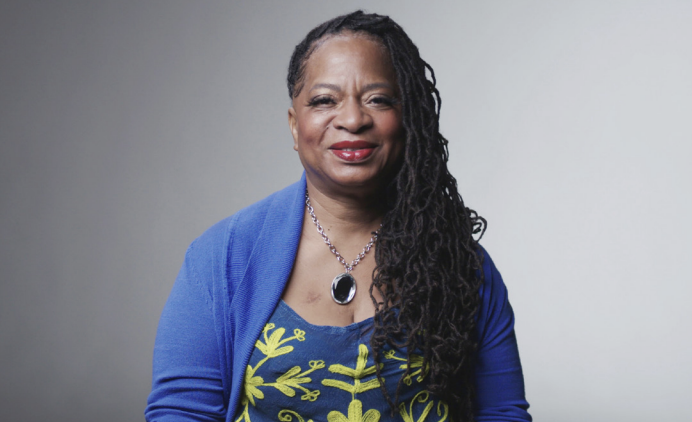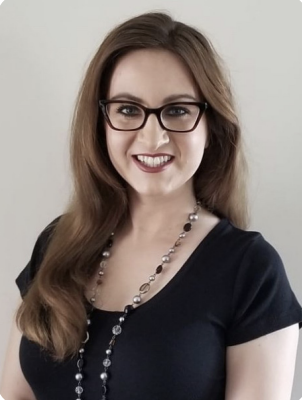When I woke up one morning at the age of 27 to find that I had lost my voice, a cancer diagnosis was the last thing I expected. Another thing I didn’t fully expect: the bills that came with it…and keep on coming. Prior to becoming a cancer patient, I had no idea how expensive it can be to have cancer in the United States.
Six years, three surgeries, one course of radioactive iodine, a dozen speech therapy sessions, countless doctor’s visits and assessments, months of hypnotherapy (to help me cope with my debilitating fear of all things medical), and a pill a day since, I am a thyroid cancer survivor.
I consider myself fortunate in that this type of cancer is highly treatable, and in that—while certainly costly—the treatments for it are relatively inexpensive compared to other cancer therapies. Because of this, and because of my health insurance and supportive husband and family, I managed to mostly avoid the financial toxicity that so many cancer patients are forced to deal with on top of a devastating health crisis.
Financial toxicity, or the hardships resulting from expensive and frequently unaffordable cancer care, is an epidemic among American cancer patients. And it’s not hard to see why—prices higher than $10,000 per month for cancer treatments are common1,2; for a patient with 25% coinsurance with a typical employer-sponsored health insurance plan, that translates to $2,500 per month in out-of-pocket costs. That’s nearly 70% of the monthly income for the average American, according to data from the US Bureau of Labor Statistics.3
In a 2020 survey of American patients receiving cancer immunotherapy, nearly half (82 of 172) responded that they experienced financial toxicity during their treatment journey; high medical co-pays, loss of income, and high drug and treatment costs were the most commonly cited causes. To cope with this financial toxicity, the patients reported using their personal savings (62%), receiving financial support from family and friends (35%), and cutting back on daily household expenses (32%).4
Of the patients who experienced financial toxicity, nearly half were unaware of the possibility of developing financial toxicity prior to beginning treatment. Only 29% stated that they received pre-treatment financial counseling from their medical team—an intervention that was associated with a reduction in the incidence of financial toxicity among the survey respondents.4
Another recent study using real-world data showed that patients with advanced breast cancer—one of the most frequently diagnosed cancers in the United States5—experienced financial toxicity at a staggering rate of 87%. Moreover, of the 189 patients surveyed, 47% reported work difficulties due to cancer, such as having to stop work or reduce their hours.6
But the numbers alone don’t paint a full picture of the financial impact of cancer. To better understand the issue, Annexus Health asked cancer survivors to share their personal experiences with financial toxicity.
Beth’s story

When Beth was diagnosed with stage III triple-negative breast cancer in July of 2007, what followed was “a complete whirlwind.” She was quickly introduced to an extensive care team that included an oncologist, a breast specialist, a surgeon, a radiologist, and a patient navigator.
But notably absent from the professionals dedicated to helping Beth through her health crisis was a financial counselor—despite the fact that the large hospital system at which Beth received care does have financial counselors on staff.
“Nobody had any conversations with me [about finances],” Beth, now 56, recalls. “There was no, ‘Hey, there’s also a financial counselor that we can put you in touch with if you think you might need some assistance going through this.’”
“I feel like I really needed someone to talk to us. We were just whisked into stuff. It was just like, ‘Okay, you need to go do this test, this test, and this test, and then on August first, you need to be at your oncologist for your first round of chemotherapy.’”
Like so many cancer patients, Beth felt a numbness in the days and weeks following her diagnosis. “I was in robot form,” she explains. “I’m like, Okay, where am I going next? What am I supposed to be doing? I just want to live.”
Although various forms of patient assistance are often available to cancer patients—through both charitable organizations and the life science companies that manufacture oncology therapeutics—little is done to ensure that patients actually receive it.
If Beth was eligible for any such assistance, no one ever mentioned it to her. And without it, she shares, “we struggled.”
“You’re trying to get yourself through cancer, and you don’t know whether you’re going to make it through. And there are bill collectors calling.… There were multiple times that I was bawling on the phone with these people.”
Even with health insurance, Beth and her then-husband struggled to pay the bills, like a $500 co-pay for a single shot following each round of chemotherapy.
The medical bills were on top of the family’s existing day-to-day expenses. And because Beth was unable to work full-time due to the physical strain of her cancer treatments, they now had to make ends meet on one income instead of two.
As Beth points out, managing the financial aspect of cancer “is a feat within itself.” A feat with which cancer patients and their families are tasked during what is often the most chaotic time in their lives.
While Beth is grateful to have had the support of her husband at the time and mother while navigating her cancer journey, she wishes she and her family had had the expert guidance of a financial professional “to figure out how to manage all these bills that are coming at us. How to help us pay our mortgage. How to help us pay our utility bills. How to help us put food on the table.”
The financial burden took an emotional toll on Beth, who couldn’t help but feel guilty for getting cancer and putting her family through this. “In my own little world, I caused it,” she says. “I created that monster that was happening to us. I created all these issues because I had cancer.”
Beth feels that “the struggles our life went through as far as my health issues,” and the financial toxicity that came along with them, contributed to her divorce.
While Beth chooses to focus on the positive—which she firmly believes can help a person rise above the many challenges of cancer—she wonders how things might have been different had her oncology provider made an effort to connect her with patient assistance.
“I just feel there could have been a personal phone call to say, ‘Hey, we’re all in this together. Let’s help you.’ And that’s truly missing. I really wish I had known that there were a lot of avenues out there.”
Michele’s story

2017 was a year of big milestones—and big expenses—for Michele. She and her wife took a trip to Ireland to celebrate Michele’s 50th birthday. Their son got married. Their dog, sadly, had to have her leg amputated.
Then, in February of 2018, Michele was diagnosed with stage II invasive ductal carcinoma. At a moment when the family had little savings left, they were suddenly facing enormous expenses, with life-or-death stakes.
The experience was so overwhelming—and the associated costs so high—that Michele nearly opted not to undergo the genetic testing necessary to determine whether she needed a full or partial mastectomy.
“When the testing company called me, they were like, ‘If we bill it through your insurance, that’s $1,800 out of pocket. Or if you want to just give us a credit card and we don’t go through your insurance, it’s $650 out of pocket,’” she remembers.
“My first comment was, ‘Let’s just not worry about it. I don’t need the hassle.’”
But, imagining her family’s reaction, Michele quickly reconsidered. “Then I thought, ‘Oh, my wife’s going to be so upset with me. We just spent $2,000 having the dog’s leg amputated, and I’m not willing to spend $650 on a test to determine what type of surgery I really need?’”
Michele took the test, which fortunately came back negative, meaning that she was a candidate for a partial mastectomy. But this good news was quickly followed by bad, when Michele learned the week after surgery that the cancer had spread to a lymph node.
“That really kind of changed the whole game for us.”
Michele had initially been told she might need 4 rounds of chemotherapy, but that turned into 16. The chemotherapy was followed by 30 radiation treatments.
“I was stressed out and exhausted.” In the midst of all that, Michele also had to deal with “the financial part.”
“I learned a lot about insurance. I spent a lot of time on the phone talking about bills and co-pays.”
Unlike Beth, Michele was contacted by a financial counselor through her healthcare system. But the conversation was brief, and not very helpful.
“The financial person contacted me after surgery and said we made too much money…and that was pretty much the end of the conversation,” Michele explains.
“We’re fortunate, but at the same time, we’re not wealthy. There’s a middle place where people make money and they have jobs. We kept our cars and our house. But there’s also the assumption that no matter what comes your way, you just have the money for it—which isn’t true.”
As happens to many cancer patients, patient assistance was presented to Michele as black and white: either you need it (and qualify for it) or you don’t. But the reality is that there is a wide range of patient assistance out there, and providers often look at only a narrow portion of it.
The result is that patients like Michele who are “in the middle” slip through the cracks, missing out on assistance options for which they may qualify. And that means their lives are disrupted in ways that may have been preventable.
Michele and her wife ultimately had to take out a home equity loan in order to help pay off some of the bills, and they were forced to reevaluate the future they had been envisioning.
“We wanted to move,” Michele shares, explaining that prior to her diagnosis, they had been planning to get a house where she could have a studio to teach yoga classes.
“And I was hoping to get back to Ireland, but now that won’t happen. All that’s put on hold right now.”
Michele also points out another barrier to cancer patients receiving assistance: a feeling that by asking for/accepting assistance, they are taking money away from other patients who may be in even more dire financial straits.
“I have a feeling that even if we had known that there was some assistance available, we would have felt guilty using it because there are other people in greater need.”
But, Michele acknowledges, this problem could be remedied if practices were to normalize patient assistance by proactively seeking out all available assistance options on a patient’s behalf, with a goal of making cancer treatment as affordable as possible for each individual patient.
“If the practice were to offer it and make it seem like a normal part of the process, I don’t think it would feel quite as much like I was taking it away from someone else.”
The importance of making cancer care as affordable as possible is clear to Michele, especially as she reflects on the many smaller expenses cancer patients incur in order to make going through treatment more bearable.
For her, those included things like a wig, expensive natural deodorants (as regular deodorant gave her a rash while undergoing chemo), acupuncture to avoid vomiting during chemo, and physical therapy, among others. Expenses like these are often overlooked, but they quickly add up. And for many patients experiencing financial toxicity, they are prohibitively expensive.
“I think about the people who could possibly feel a little bit better if they had access to things like acupuncture or physical therapy, but they can’t afford them.”
As Michele knows from experience, “There are just so many ways I think people could be more comfortable going through cancer treatment rather than just getting through it.”
Sonya’s story

As Sonya, now 61, looks back on the moment in 2007 when she was first diagnosed with HER2-positive breast cancer, she recalls the initial shock followed by thoughts of, “Am I going to die?”
“It was just for a split second,” she remembers. “That thought didn’t linger in my head once the doctors said, ‘We have a plan.’”
The plan involved surgery, three different types of chemotherapy, and radiation.
What it didn’t involve was any patient assistance, or even a discussion about finances.
“There was nothing like that in place when I was going through treatment,” says Sonya. “They don’t talk about it. They don’t bring it up. It’s just a navigator lady getting you from point A to point B with your treatments.”
Sonya says the patient navigator also told her about the many programs offered to cancer patients through her treatment center—things like swimming classes and makeovers. “It was really nice. I appreciated it and all…but there was really no financial assistance program in place. It would have been great if there had been.”
“I had good insurance where I didn’t have to worry about my medical treatments,” she explains. “But everything else was up in the air.”
At the time of her diagnosis, Sonya had a daughter in elementary school and a son who had just started college, and she was the primary breadwinner of her household. Then, because of the chemotherapy, she was forced to stop working.
“I thought I was going to be able to do it. After my first chemo, I went back to work and I felt terrible. But after the second one, I was done. I couldn’t move. I had to quit my job.”
Sonya was on her own to figure out how to pay the bills.
“That’s none of their concern,” Sonya says of her healthcare providers. “It’s not that they don’t care. It’s that they’re more concerned about you getting better. Their focus is not on, ‘How is she doing financially?’ Nobody ever talks about that.”
Sonya was fortunate to be surrounded by people who loved her and supported her through her cancer journey, including giving her money when they could.
“They helped me keep the lights on,” Sonya says appreciatively.
Still, there were some bills Sonya just couldn’t pay. “I lost my cars because I couldn’t pay for them. They were gone.”
For Sonya, there was a sense of relief when her cars were repossessed, as that lifted a little of the immense financial pressure off her shoulders. The car payments were now one less thing to worry about.
Sonya’s attitude, and that of her family, boiled down to: Who cares about cars? Staying alive is what matters.
That outlook is only natural in those facing a potentially life-threatening illness. Cancer gives you a new perspective on life, helping you focus on what’s truly important.
Unfortunately, that feeling of being grateful just to be alive can contribute to cancer patients accepting financial toxicity as a necessary evil, a trade-off to receiving needed care. It can keep them from looking into getting patient assistance—or even considering that patient assistance exists.
But it doesn’t have to be this way. When oncology providers take the step of reaching out to patients to assess and help address financial concerns, fewer patients lose their cars (or homes, or food security) in the fight for their lives.
Like Beth and Michele, Sonya is sharing her experience with financial toxicity to shed light on the problem, in hopes of helping other patients.
“I’m not a closed person. This whole situation—this isn’t private,” she says. “We’re trying to help somebody else.”
Moving forward: changing what’s not working
“Cancer changes you,” Beth explains. “It makes you really look at your life as a whole and at what is not working.”
That’s certainly true of the three women we interviewed, each of whom channeled her experience with cancer into something positive by identifying and working to address what she saw as unmet needs in cancer care.
For Beth, that has meant a new career as a certified health coach, helping other cancer patients along their journey.
For Michele, it’s meant teaching therapeutic yoga for cancer patients.
And for Sonya, it’s meant founding Sonya’s Cancer Caregivers’ Center—an organization dedicated to supporting the needs and well-being of caregivers of cancer patients.
For the oncology community at large, there’s another unmet need to address: that of effectively connecting cancer patients with the assistance options available to them.
The pharmaceutical industry and charitable foundations can both support this goal by making it easier for patients and providers to access assistance opportunities, such as by moving toward a standardized digital enrollment form and utilizing technology to automate processes.
Oncology practices, too, can take a more active role in closing the gap that exists between patients and patient assistance by:
- Screening all patients for financial toxicity and identifying all available assistance,
- Proactively initiating financial discussions, and
- Destigmatizing/normalizing the process of enrolling patients in assistance programs
This didn’t happen for Beth, Michele, or Sonya. It didn’t happen for me. And it doesn’t happen for many, many cancer patients across the country.
A patient’s financial health is an important element of their overall health. When we start to treat it as such, we can dramatically change the American experience of living with cancer.
About the writer

Gia Seymour is a freelance writer specializing in science and health. She is passionate about giving patients a voice in their care and making medical writing more accessible to patients and their loved ones. She is also a thyroid cancer survivor. Gia can be reached at [email protected].
References: 1. Kantarjian HM, Fojo T, Mathisen M, Zwelling LA. Cancer drugs in the United States: justum pretium—the just price. J Clin Oncol. 2013;31(28):3600-3604. doi:10.1200/JCO.2013.49.1845 2. Glover L. Oncologists worry about rising costs of cancer treatment. US News & World Report. July 1, 2015. Accessed August 3, 2020. https://health.usnews.com/health-news/patient-advice/articles/2015/07/01/oncologists-worry-about-rising-costs-of-cancer-treatment 3. Usual weekly earnings of wage and salary workers first quarter 2020. News release. Bureau of Labor Statistics. April 15, 2020. Accessed August 3, 2020. https://www.bls.gov/news.release/pdf/wkyeng.pdf 4. Vorobiof DA, Hasid L, Litvin A, Deutsch I, Malki E. Financial toxicity (FT) real-world data evidence (RWDE) in American patients (pts) receiving cancer immunotherapy drugs (IOT). J Clin Oncol. 2020;38(15)(suppl):e19331. doi:10.1200/JCO.2020.38.15_suppl.e19331 5. Common cancer types. National Cancer Institute. Updated February 2019. Accessed September 19, 2020. https://www.cancer.gov/types/common-cancers#:~:text=The%20most%20common%20type%20of,are%20combined%20for%20the%20list 6. Vorobiof D. Overcoming cancer’s financial toxicity with real-world data. Managed Healthcare Executive. September 15, 2020. Accessed September 19, 2020. https://www.managedhealthcareexecutive.com/view/overcoming-cancer-s-financial-toxicity-with-real-world-data


